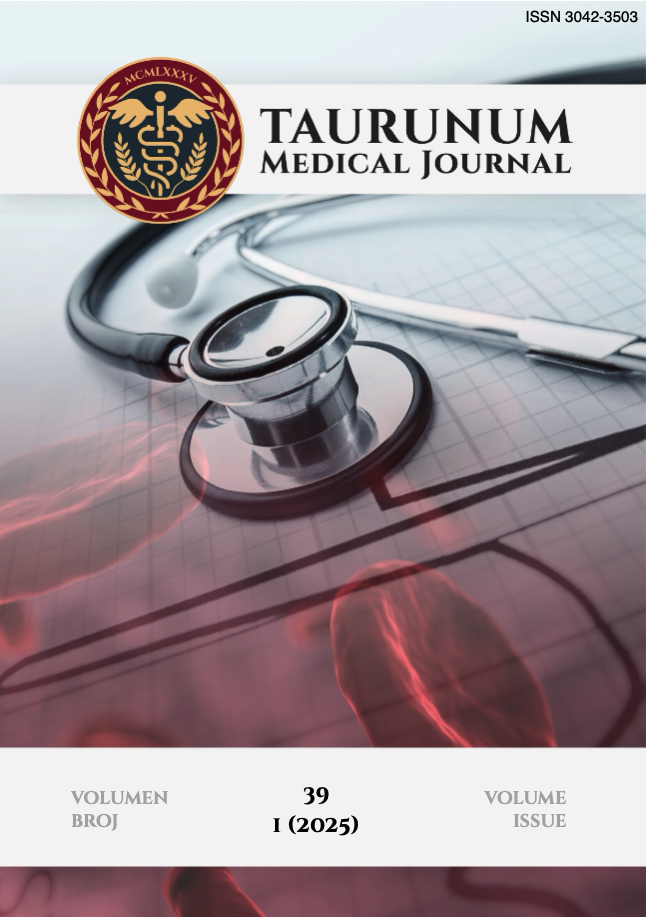
More articles from Volume 29, Issue 4, 2013
Recurrences in nonseminomatous germ cell testicular tumors with no viable cancer at postchemotherapy retroperitoneal lymphadenectomy
The morphology of tuberculous granulomas in bronchial biopsies
ID microgel cards in detection of IgA deficiency in patients with gastrointestinal tumors
Characteristics of the sarcoidal granuloma in transbronchial lung biopsy
Histological characteristics of pulmonary langerhans cell histiocytosis
Article views
Recurrences in nonseminomatous germ cell testicular tumors with no viable cancer at postchemotherapy retroperitoneal lymphadenectomy
Published: 01.12.2012.
Biochemistry
Volume 29, Issue 4 (2013)
pp. 937-945;
Abstract
This sudy is performed to determine disease related outcome in metastatic nonseminomatous germ cell testicular tumors (NSGCTTs) in patients with absence of viable cancer (VC) in the postchemotherapy retroperitoneal lymphadenectomy (PC-RPLA) specimen and determine wheter clinical variables can help predict disease progression Among a survey of 163 patients submitted to PC-RPLA from 1980-2005, 126 patients (77%) had no VC (44 fibrosis, 82 teratoma). At mean follow-up (MFU) of 158+/-77.7months, 20 patients (16%) developed recurrences within median free interval of 19.3 montha, with complete response (CR) following applied therapy in 9 patients (45%). Eleven patients (8%) diead (8 of disease, 3 of' other causes). Predictors for poorer recurrence free survival (RFS) were advanced clinical stage (CS) (P<0.016), intermediate/ poor IGCCCG group (p<0.004), and PC-RPLA nodal size (p<0.0007), while for disease-speciphic survival (DSS) included recurrences (p<0.0001), PC RP residual mass (RM) diameter ((p<0.006), worse IGCCCG risk (p<0.0003) and increased HCG at PC-RPLA (p<0.0001). A subset analysis of potential predictors of poorer RFS in patients with fibrosis identified only worse IGCCCG risk (p=0.05), whereas in teratoma were worse IGCCCG risk classification (p=0.01), PC RP RM size (p<0.0005) and unfavorable histology (teratoma with malignant transformation [TT] vs. mature teratoma [MT]/immature teratoma [IMT]Xp<0.0001). Adverse impact on DSS in fibrosis had elevated HCG on PC-RPLA (p<0.013) and in teratoma the presence of unfavorable IGCCCG risk (p<0.0001), worse RP histology (p<0.05) and postoperative recurrence (p<0.0001). The 5-year DSS and RFS rates for all patients with no VC at PC-RPLA were 87% and 85%, while at 10-year were 79% and 75%, respectively (Log rank=13.155; p<0.003). Patients with no VC at PC-RPLA remain at risk of recurrence. Several clinical variables, including CS, intermediate/poor IGCCCG group, preoperative HCG level, diameter of RP RM and postoperative recurrence help better to define which patients are at risk of disease recurrence and survival; as such these patients should be followed regularly in the postoperative period.
Keywords
References
Citation
Copyright
This is an open access article distributed under the Creative Commons Attribution License which permits unrestricted use, distribution, and reproduction in any medium, provided the original work is properly cited.
Article metrics
The statements, opinions and data contained in the journal are solely those of the individual authors and contributors and not of the publisher and the editor(s). We stay neutral with regard to jurisdictional claims in published maps and institutional affiliations.




